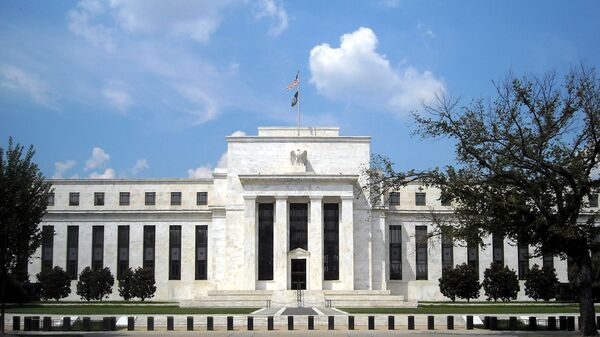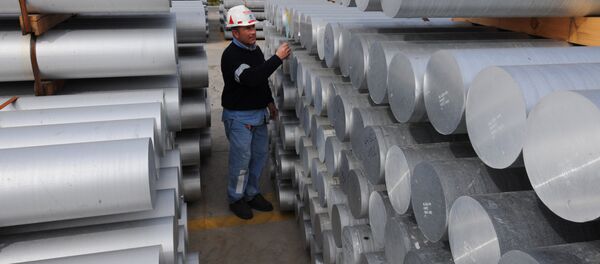Kristian Rouz — Federal Reserve officials say the steep, steady decline in the US jobless rate over the past decade stems from the implementation of prudent and appropriate monetary policies. Central bankers explained that a combination of ultra-low interest rates and a cautious approach to policy normalization have allowed the US private sector to gradually increase their workforce investment and job creation.
The US unemployment rate dropped to 3.9 percent as of last month, a multi-decade low. Although the labor participation rate remains tepid, at roughly 62-63 percent, Federal Reserve officials say historical data supports their claims that monetary policies have played the decisive role in job creation.
"The empirical record of policymakers' ability to engineer a growth recession that nicely lands the economy at full employment without morphing into a full-blown recession is not comforting," Rosengren wrote in a new Fed research paper.
However, this time around, this appears not to be the case, as a ‘soft landing' of the economy could be avoided, according to Rosengren.
READ MORE: 2 Birds, 1 Stone: Trump Economist Jabs Clinton Voters Over Obama Economic Data
The US economy seems to be firing at all cylinders just fine, growing at an annualized rate of 4.2 percent in 2Q18. This rate could be sustained due to the Fed's new process of systematically reviewing its policies in order to determine the measures that support expansion.
The Fed has been tweaking its policy framework on an irregular basis recently; however, such reviews take place at least once per year. Foreign central banking authorities, such as the Bank of Canada, only review their policies once every five years.
However, some experts have argued that ultra-low unemployment could bring on a recession due to the rising cost of labor. A low jobless rate creates a lack of workers, pushing wages up and driving a rise in business spending on personnel. This weighs on business profitability and eventually impairs company performance, leading to a slowdown in activity, layoffs, and, ultimately, an economic downturn.
READ MORE: Chinese Economic Growth Slows, Exports Strengthen Amid Trade Tensions With US
Nonetheless, others say the still-lingering ‘stickiness' in wages — meaning a low level of wage inflation — could allow businesses to employ more workers at a lower overall cost.
In this light, some US officials have become increasingly hawkish on interest rates, saying credit costs must increase more aggressively to curb the ongoing rise in prices. Such moves would make it easier for American workers to survive at their tepidly-growing wages.
Yet, at the same time, some of the heavily-indebted households could be left struggling to refinance their loans.
Fed Governor Lael Brainard, however, said the US central banking system can afford to keep raising interest rates for at least another year or two. This is due to the projected gains in consumer and business spending encouraged by President Donald Trump's tax cuts — as well as a possible second helping of those tax reductions.
READ MORE: US Trade Goods Deficit Widens in July, but National Debt Drops
"With fiscal stimulus in the pipeline and financial conditions supportive of growth, the shorter-run neutral interest rate is likely to move up somewhat further, and it may well surpass the longer-run equilibrium rate for some period," Brainard said.
With the Fed's rates currently standing at 1.75-2.00 percent, Brainard said the so-called ‘neutral rate' would be at 2.9 percent — meaning the existing monetary conditions are supportive of inflation and the broader economy.
But Rosengren stressed that Fed policy going forward would depend on the decisions made in Congress and in the White House. In the event the Trump administration succeeds at implementing a second round of tax cuts, the Fed could embark on a more hawkish campaign against inflation and asset bubbles, hiking rates toward and above 3 percent.
"We should probably not rely on monetary policy alone, even with the best-designed framework, to take sole responsibility for economic stabilization," Rosengren suggested. "There are practical limits."
At this point, policymakers are struggling to spur sustainable growth in wages, while crafting an environment in which businesses would be able to afford a costlier workforce for longer. Whether the ongoing growth cycle ends with a recession in the early 2020's, or the economy continues to grow in the second half of the next decade, still remains to be seen.





